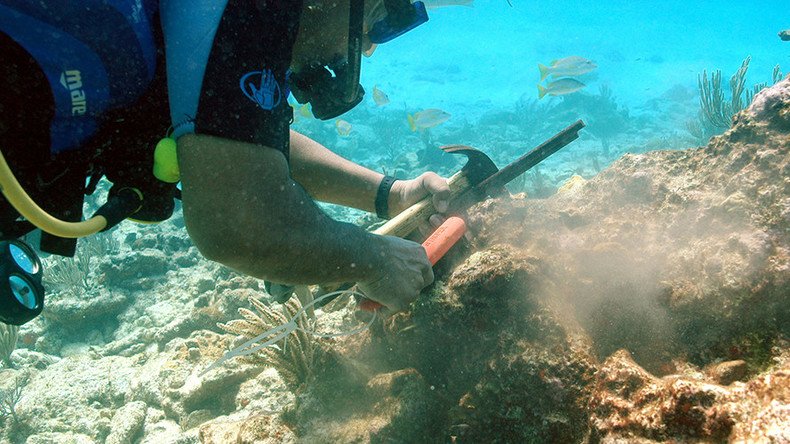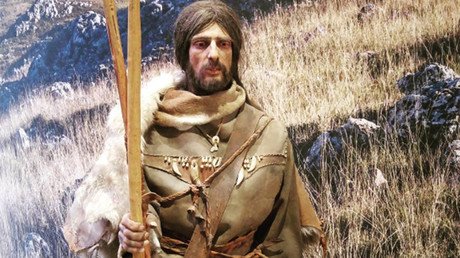New artifacts suggest first humans colonized southeastern US 1,500yrs earlier than thought

The first humans that supposedly made their way from Siberia to North America via Alaska probably struggled through the perilous journey some 1,500 years earlier than previously thought, suggest artifacts recently retrieved from an underwater sinkhole.
A stone knife, mastodon bones, and other findings taken from a sinkhole in the Aucilla river, the so-called Page-Ladson site not far from Tallahassee, Florida’s capital, may indicate that colonization of this North American region started as long as 14,500 years ago, or even earlier.
The 60-meter (200ft) wide, 11-meter (35ft) deep sinkhole used to be a shallow pond that attracted wild animals to its fresh water, while probably providing “easy pickings” for hunters at the same time, Mike Waters of Texas A&M University in College Station said, explaining where the bones may have come from.
With constantly rising sea levels, the site is now filled with water, so the research required a group of divers that went right down to the bottom. Despite wearing headlights, it was still “as dark as the inside of a cow, literally no light at all,” said Jesse Halligan, an assistant professor of anthropology at Florida State University in Tallahassee and lead diving scientist, according to AP.
To establish the age of the ancient tools and bones, archaeologists studied mastodon dung that turned out to contain twigs fit to be analyzed. Judging by the twigs’ age, the knife is about 14,550 years old.
Scientist also examined a mastodon tusk with deep scratches, probably man-made, which was found at the same site in 1993, contributing to a new theory that could potentially rewrite the history of the first humans in North America.
The sinkhole is the earliest documented site containing clear signs of human presence in the southeastern United States, the researchers claim. Their findings, published in the Science Advanced journal on Friday, are said to provide “far better” evidence than previous studies from the site.
Most experts are still hesitant to accept the new conclusions, however
“The evidence from the Page-Ladson site is a major leap forward in shaping a new view of the peopling of the Americas at the end of the last Ice Age,” Waters said.
“In the archeological community, there’s still a terrific amount of resistance to the idea that people were here before Clovis,” he added, referring to the “Clovis people” – skilled hunters known for their weapons who are considered to be the ancestors of most of the oldest indigenous cultures of the Americas.
The sinkhole in the Aucilla river was searched by archaeologists several times in the 80s and 90s, but has been “politely ignored” ever since.













